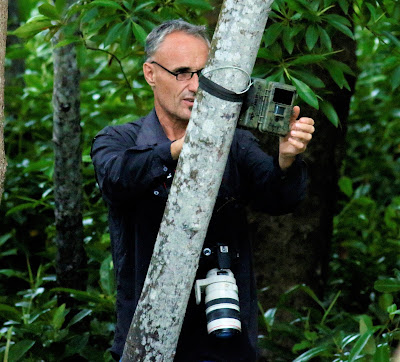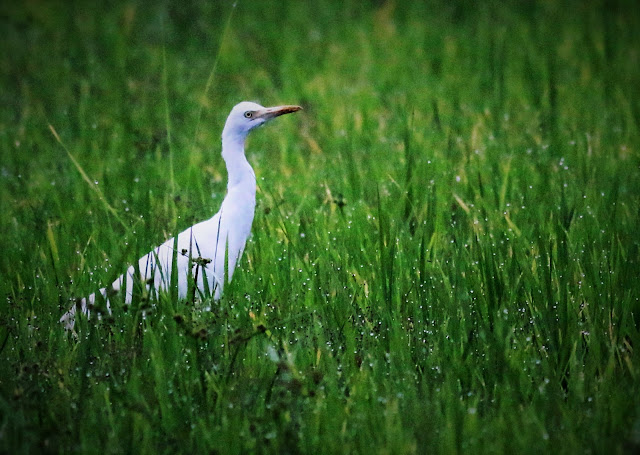Would you be able to filter out which species of swiftlets and swallows from this flock? The answer to this question can range from "quite easy" to "near impossible". Let me begin with the difficult ones first.
Introduction
Avian literature on some bird species has been limited or otherwise scarce. At times their conclusion can be both confusing and challenging for most bird-watchers as well as the common people. One of the bird species in question should be the study on swiftlets. While the taxonomy of some swifts and swallows are straight forward and indiscreet throughout its range, for example "Whiskered Treeswift" (Hemiprocne comata), Barn Swallow (Hirundo rustica) and House Swift (Apus affinis), however there are some of which are still in the state of flux, particularly the swiftlets.
"The taxonomy study of South-East Asian swiftlets has proved challenging due to their limited variation in size and plumage coloration" { Earl of Cranbrook et al (2013), Forktail 29; 107-119 }
Classification of Swiftlets
In their research titled "Phylogenetic relationships amongst swifts and swiftlets: A multi locus approach", Henri A. Thomassen et al (2005) reported that originally, all swiflets were placed into a single genus, "collocalia" and this classification has been used for many years. However in 1959, echolocation was discovered in swiftlets which led to a revision of swiflets taxonomy. Brooke research in 1970 and 1972 split the genus "collocalia" into three (3) different genera:
ii) non-echolocation "Hydrochous" - i.e Giant Swiflet (now named as "Waterfall swiftlet")
iii) echolocation Aerodramus
The classification based on echlocation however did not gain much support by the scientific community. Later many more research were carried out and the most reliable results todate are the ones on their nest construction and tarsal feathering. This has subsequently led to a general division of swiflets into "white-nest swiftlets" and "black-nest swiftlets". In their research titled "The species of white-nest swiftlets (Apodidae, collocaliini) of Malaysia and the origins of house-farm birds: morphometric and genetic evidence", Earl of Cranbrook et al (2013) reported that swiflets were described as small swifts "Apodidae", of subfamily "Apodinae" and tribe "Collocaliini".
Results from the research on their nest construction has further led to the classification of subspecies "germani", "javensis", "vestita" and "micans" as white-nest swiftlets ! Meanwhile in this region, it was reported that the nominated subspecies "Collocalia germani germani" is considered to be conspecific with the edible-nest swiflet (Wikipedia) ! Allen J & Pearson (2012) field guide however has treated both "C. germani" and "edible-nest swiftlets" as a single species of "Aerodramus fuciphagus". Robson's field guide and Handbook of the Birds of the World (HBW) meanwhile described "C.germani" as a resident swiftlet while "edible-nest swiftlet" occurs from Java to lesser sundas.
Note: there are also research which have reported that "long distance movements of swiftlets cannot be discounted as they can overlapped in their diurnal activity range"
General Comparison of Germani and Edible-Nest Swiflets
So, you might asked what's in for bird-watchers then ? Moving aside from the mumbo-jumbo of science and for the fun of bird watching, here is a more simplistic description of both the swiftlets (i.e in terms of their external features).
According to HBW, "germani" is described as having "strikingly pale underparts and broad whitish rump" while Earl of Cranbrook et al (2013) has divided "germani" into "Northern Grey-rumped Swiftlets" which is reported to occur in Northern Peninsular Malaysia and the "Southern Brown-rumped Swiftlets" which is reported to occur further south and in Sabah ! Aside from the above description and based on my personal field exposure, generally you will be able to observe some noticeable differences.
Let see whether we can differentiate the species from the photos below:
Plate 1.1
Plate 1.2
Plate 1.3
Plate 1.4
Plate 1.5
---------------------------------------------------------------------------------------------------------------------
Plate 2.1
Plate 2.2
Plate 2.3
Plate 2.4
Plate 2.5
Summary
From the above photos, you will noticed that there are considerable amount of variations in their wing shape, body size and colors. Here is the summary of the structural differences:
Plate 1.1 to 1.5 Plate 2.1 to 2.5
* longer wings and more pointed * shorter wings
* looks plummer * smaller size
* uniformly darker * body color paler
Other observable information (which can only be seen from the field):
* fluttering flight, gliding intermittently * flight more rapid
* more abundant * lesser in numbers
Note: Unless otherwise indicated, all the above photos were taken at three Northern states in Peninsular Malaysia i.e i) Penang (A.I.D), Kedah (near Sg Petani paddy fields) and iii) Perlis (at Chuping) from the months of December 2015 to February 2016 and between 8.30am to 12.30pm.
* looks plummer * smaller size
* uniformly darker * body color paler
Other observable information (which can only be seen from the field):
* fluttering flight, gliding intermittently * flight more rapid
* more abundant * lesser in numbers
Note: Unless otherwise indicated, all the above photos were taken at three Northern states in Peninsular Malaysia i.e i) Penang (A.I.D), Kedah (near Sg Petani paddy fields) and iii) Perlis (at Chuping) from the months of December 2015 to February 2016 and between 8.30am to 12.30pm.
Also take note of the notch tail in the first 2 photos (plate 1.1 and 1.2). For general identification purposes and for the fun of bird watching, it can be said that the birds shown from Plate 1.1 to Plate 1.5 could probably be from the subspecies "Germani" while those depicted from Plate 2.1 to 2.5 could point to those of "edible-nest swiftlets". While we wait for more conclusive results from the scientific community especially from the advent increase of using nuclear and mitochondrial as markers (also to determine the existence of hybridisation), let us enjoy the swiftlets as it is for now. Also note that generally swiftlets fly higher than swallows. So whenever you have noticed some birds flying nearby a thermaling raptor kettle high up in the sky then they are mostly likely be swiftlets.
......to be continued in Part 2.





























































